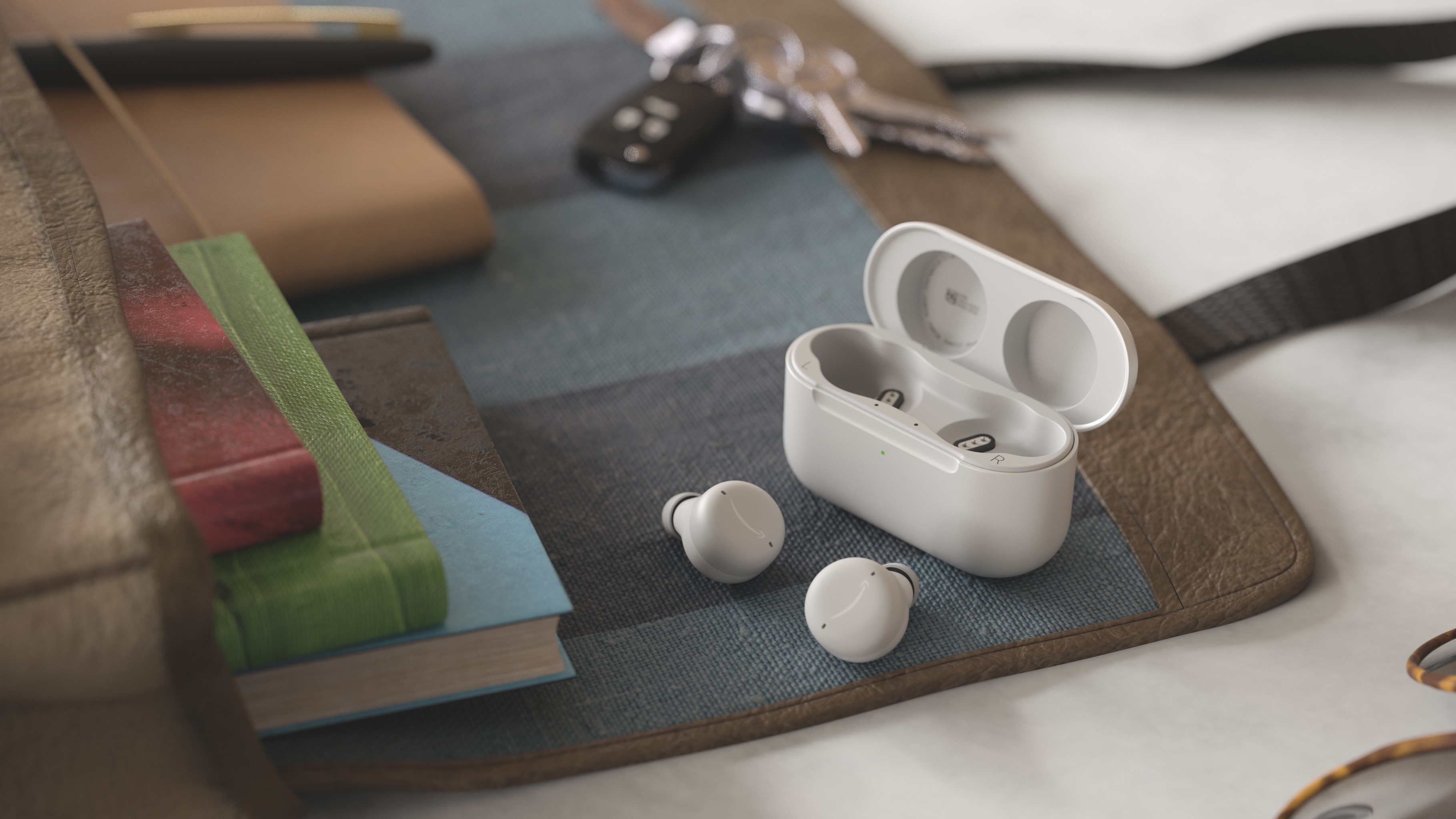Here’s the real reason Amazon added a smile logo to the Echo Buds 2

Despite being seen as a somewhat controversial - and slightly tacky - move, Amazon had a good reason to add a smile logo to the outside of its Amazon Echo Buds (2nd Gen) true wireless earbuds.
According to the company’s Head of Audio, people kept putting them in wrong.
“We found that with our first-generation, people were actually putting them in upside down or backwards,” said Phil Hilmes, Director of Audio at Amazon’s Devices & Services Team. “It’s understandable if you haven’t worn a pair before, and some people have really big ears so they actually fit in there upside down.”
You read that right, Amazon had to put the smile logo on there to prevent people from putting in the earbuds upside down.
“Having that smile logo actually helps them say, ‘OK, this is the right way this goes in there’ and it helps orient the microphone towards your mouth while still being subtle.”
The tricky balance of space, better sound, better battery life and price point
There’s an old adage in computer engineering that products can’t be fast, good and cheap, but only two out of the three. The way that Hilmes talks about audio design - and specifically the tradeoffs that have to be made when designing a pair of earbuds like the Echo Buds - you can tell he’s heard it before.
In a discussion with TechRadar, Hilmes talked about the decisions that went into making the 2nd Generation Buds - choosing to include a larger full-range driver instead of a dual driver design and building an efficient noise-cancelling algorithm that saves on battery life.
Sign up for breaking news, reviews, opinion, top tech deals, and more.
“We switched over to a dynamic driver on the second-gen earbuds and the driver diameter is 5.7mm - which sounds small, and is small - but we decided to make the tradeoff in diameter to get better excursion so that we can really push a lot of air and that helps with so many different things. Of course, that includes good bass response but also it enabled us to put a vent in [to alleviate a build up of pressure].
“We wanted to make sure that we had best-in-class ANC so to do that you need to have a lot of head room in your low frequencies to cancel out that noise. We did a trade-off with that and size,” Hilmes said.

Hilmes is the reason that Alexa can understand you
While Hilmes didn’t share too much information about his time working at Lab126, Amazon’s premier hardware lab responsible for the creation of the Amazon Echo, Echo Show, Echo Studio and Echo Buds, among dozens of other devices, he has a long history of innovation in the lab.
As the author of several white papers on noise cancellation and echo reduction, speech recognition and sound detection, Hilmes has been responsible for a number of the innovations you’ve seen in the Amazon Echo lineup for the better part of a decade now.
“What impressed me immediately once I joined [Lab126] is the startup mentality the whole place has. I know that’s common throughout Amazon, but I feel like it’s even more so within Lab126: ‘If you’ve got an idea, let’s go make it’. Whether it’s something new and creative - like a new algorithm - one of our leadership principles is to invent and simplify.”
That doesn’t mean every product that comes out of Amazon’s engineering wing is flawless - as we saw during our recent review of the new Amazon Echo Show 15 - but it does mean that the team is tackling new problems and looking for ways to innovate on what’s already out there.

Spatial audio is a hot area of innovation - but maybe best left out of earbuds for now
When asked his thoughts on the advent of spatial audio on earbuds like the Apple AirPods and the Sony WF-1000XM4, Hilmes agreed that there’s a lot of innovation happening - but the end result just doesn’t compare to a true spatial audio setup in your living room.
What I would say is that I haven’t seen anything yet that does nearly as well as speakers in a room yet, but there’s very good progress and I know it will get there.
Phil Hilmes, Head of Audio at Amazon
“I think spatial audio is great for earbuds and headphones alike, but it also comes with big challenges because generally the spatial experience is better in an actual room. The tricky thing is that everyone’s ears are different and so trying to compensate for that is a challenge. I’ve seen lots of potential solutions for that, like some companies scanning your ears, but some work better than others,” Hilmes said. “Head tracking is a good solution for that, but you have to get everything right … Trying to head tracking with virtualization is a challenge.”
“What I would say is that I haven’t seen anything yet that does nearly as well as speakers in a room yet, but there’s very good progress and I know it will get there.”
For now it sounds like we’re a few years away from spatial audio sound on the next pair of Amazon Echo Buds, but with Hilmes at the helm, we’ll be excited to hear the results when they eventually arrive.
- Need some new buds while you wait? Check out our guide to the best wireless earbuds

Nick Pino is Managing Editor, TV and AV for TechRadar's sister site, Tom's Guide. Previously, he was the Senior Editor of Home Entertainment at TechRadar, covering TVs, headphones, speakers, video games, VR and streaming devices. He's also written for GamesRadar+, Official Xbox Magazine, PC Gamer and other outlets over the last decade, and he has a degree in computer science he's not using if anyone wants it.